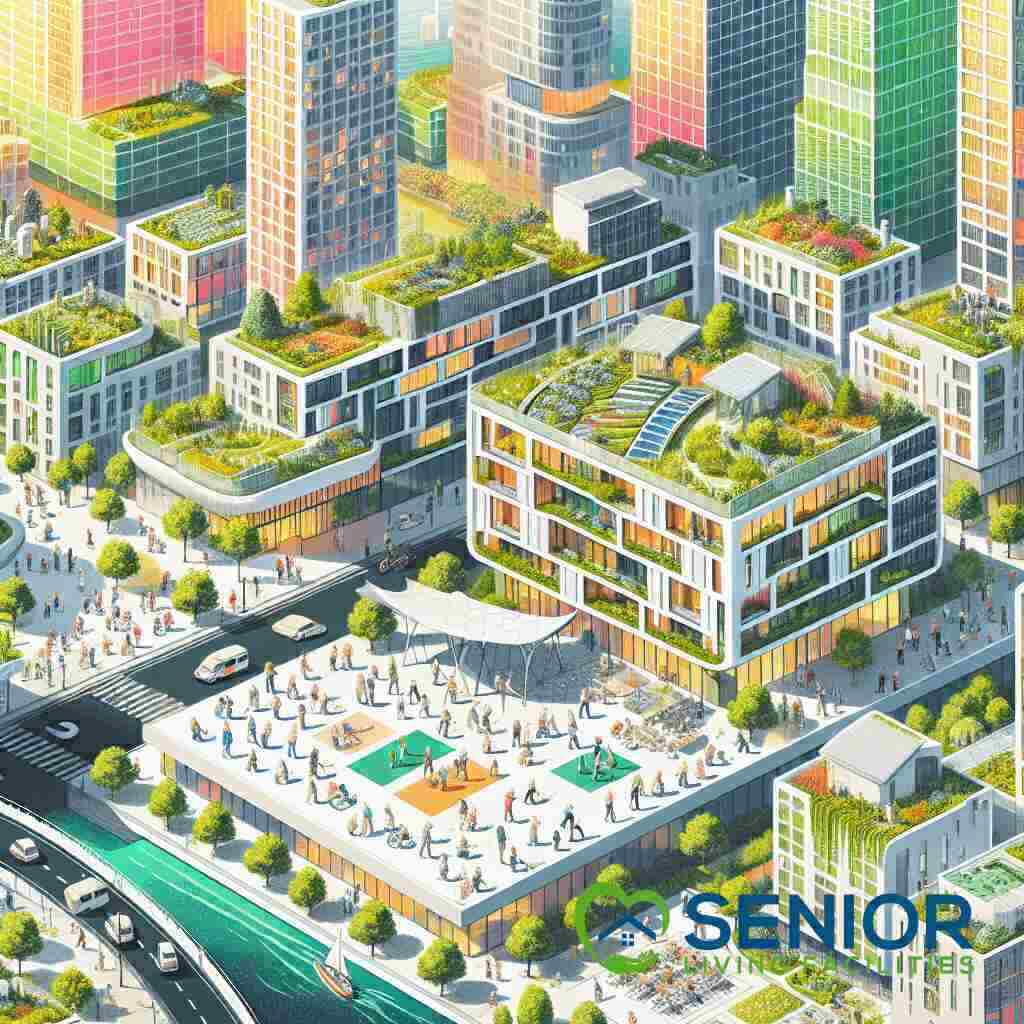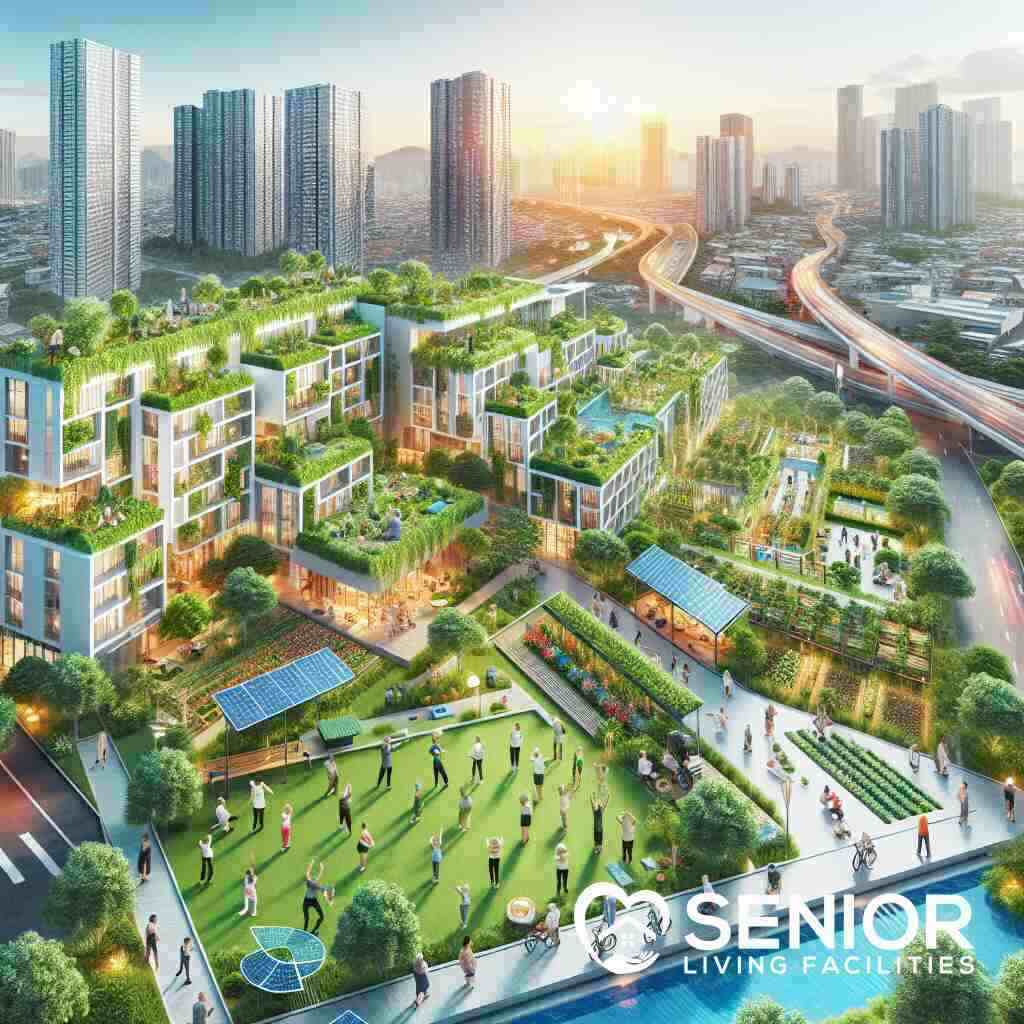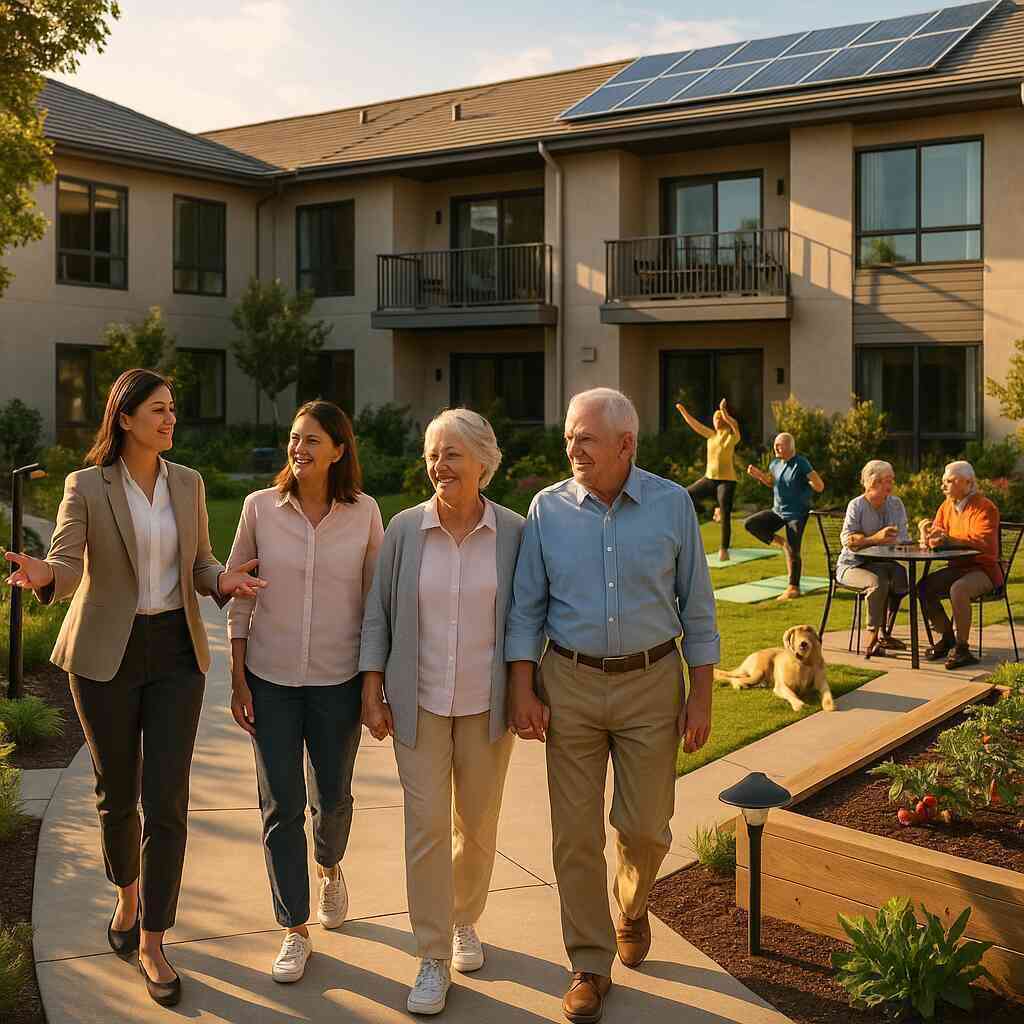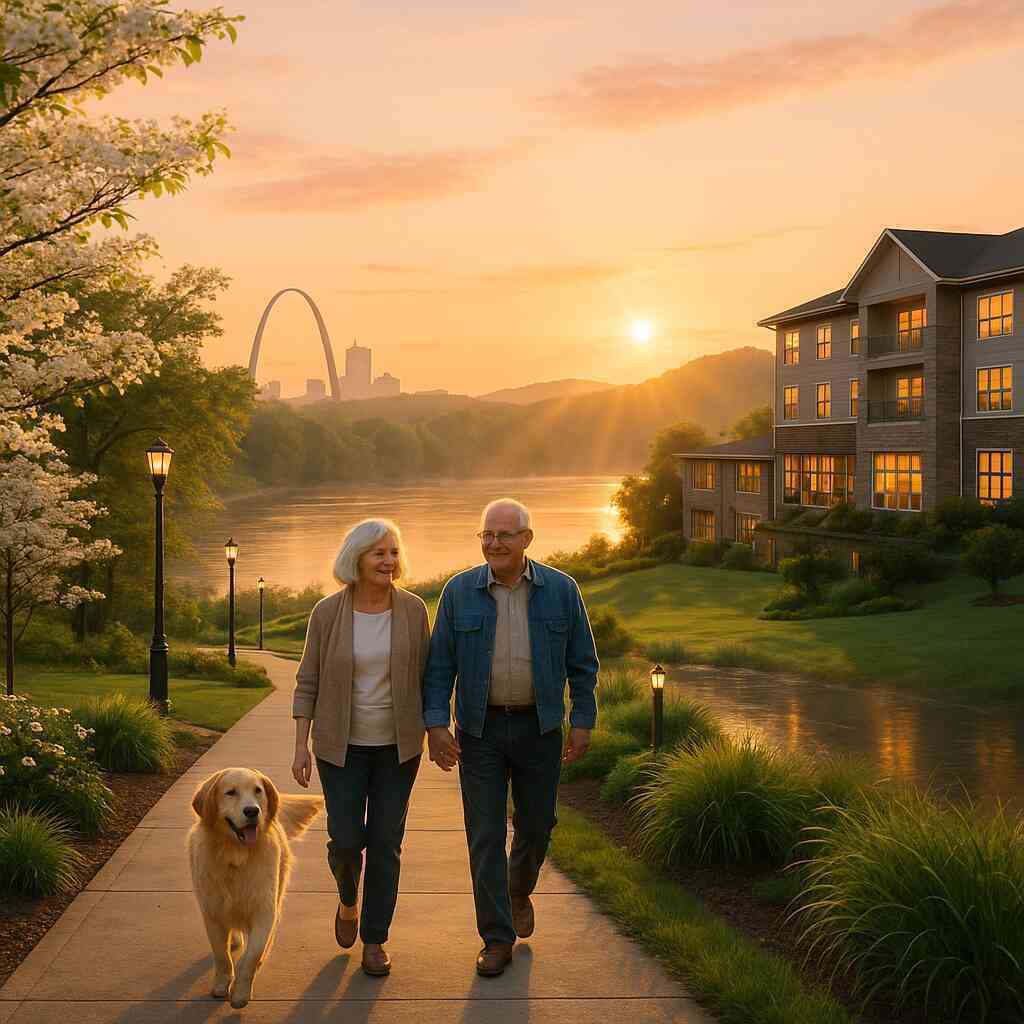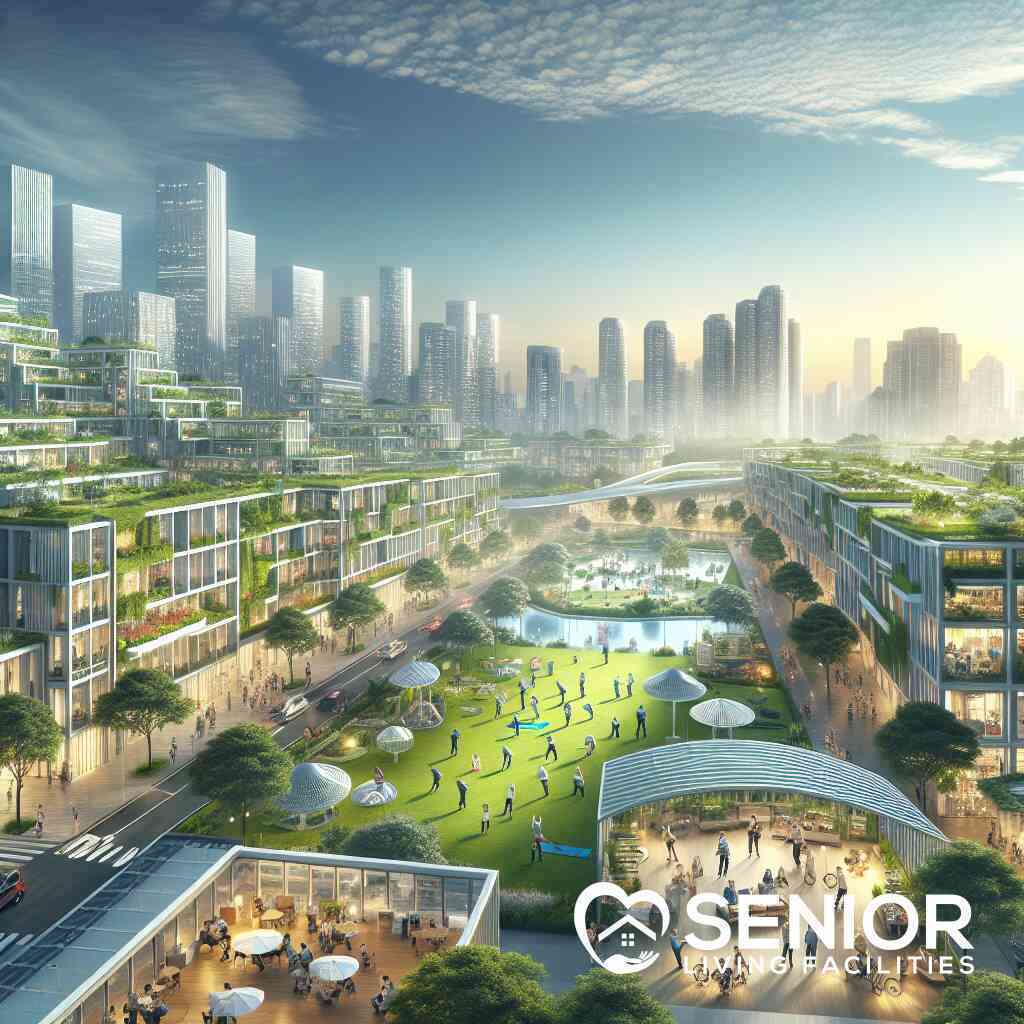
What Is the Future of Senior Living Facilities in Urban Areas
May 16, 2025
Navigating the Urbanization of Senior Living: A New Frontier
Urbanization and the Aging Population: Challenges and Opportunities
As cityscapes continuously evolve, the intersection of urbanization and the aging population in cities presents both challenges and opportunities. Urban environments must adapt to provide housing and services that are accessible and tailored to senior citizens. As the demand for senior housing increases, city planners and developers must innovate to create communities for seniors 55+ that blend seamlessly into the metropolitan framework. This shift often involves crafting spaces that prioritize ease of mobility, accessibility to healthcare services, and opportunities for social interaction. In addressing these challenges, urban senior living trends also demonstrate great potential for growth and enhancing the quality of life for seniors.
The Urban Landscape: Redefining Senior Living Facilities
With more seniors choosing to live in urban environments, the very concept of senior living facilities is being redefined. Formerly isolated or sprawling suburban models are making way for integrated urban setups. This transformation emphasizes proximity to cultural and social amenities, ensuring that seniors remain engaged and active within their communities. These facilities focus on creating a vibrant blend of security, modern design, and community engagement to offer seniors more than just a residence; they offer a lifestyle. By redefining spaces, seniors can enjoy everything the city offers while benefiting from specialized senior care.
Metropolitan Senior Living: Shaping the Future of Eldercare
Metropolitan senior living represents the forefront of eldercare evolution, where the dynamics of urban spaces are leveraged to enhance senior living experiences. The integration of technology in senior care perfectly illustrates how modern eldercare solutions are being shaped. Cities present a multitude of resources, allowing for tailored urban wellness programs for seniors. Urban centers have the infrastructure to facilitate rapid healthcare improvements for seniors, positioning them as future-proof and adaptable hubs. This approach not only encourages new ways of supporting seniors but also highlights the potential for cities to drive innovation in senior living facilities, ensuring the future of elder housing remains robust and responsive.
Innovations in Urban Senior Living: Transforming Lives
Smart Senior Living Facilities: Integrating Technology for Better Care
The future of urban elder housing is poised to undergo a technology-driven transformation. Smart elder living facilities are at the forefront of this change, utilizing cutting-edge technologies to offer enhanced care and convenience. These facilities incorporate smart home systems, wearable health-tracking devices, and robotic assistance to ensure safety and well-being. Technology not only allows for immediate response to emergencies but also personalizes care to meet the residents’ specific needs. As a result, seniors can maintain their independence while benefiting from a higher standard of living, highlighting the evolution of urbanization in senior care.
Moreover, smart technologies enhance communication between residents, family members, and caregivers, ensuring a continuum of care. The integration of artificial intelligence in monitoring systems allows for predictive insights, potentially averting health issues before they arise. This technological shift represents a significant leap in adaptive senior housing solutions, redefining urban senior living trends nationwide.
Eco-Friendly Senior Communities: Sustainability Meets Eldercare
Eco-friendly elder communities are setting new standards by merging sustainability with eldercare. These communities prioritize green building practices and renewable energy sources to minimize environmental impact while promoting healthy living environments. Sustainable senior living designs focus on energy efficiency, water conservation, and waste reduction within facilities, offering long-term benefits to both residents and the urban ecosystem.
Such communities are designed to improve air quality and incorporate natural elements, which can have profound positive effects on residents’ mental and physical health. This approach aligns with the growing awareness of environmental responsibility and reflects the importance of senior living in urban environments. Moreover, integrating gardens, green spaces, and eco-friendly technologies enhances residents’ connection to nature, enriching their daily lives and fostering well-being.
Urban Senior Wellness Programs: Prioritizing Health and Well-being
In urban settings, wellness programs for seniors are creatively evolving to support health and well-being. These programs extend beyond traditional healthcare, embedding holistic approaches to ensure a comprehensive path to wellness. Urban wellness programs for seniors include fitness classes tailored to residents’ abilities, mental health support, and social activities that encourage an active lifestyle. These initiatives emphasize preventive care, reducing the risk of chronic diseases, and promoting longevity.
Integrating wellness programs within the framework of urban senior living facilities enhances community engagement and fosters social connectivity. Through partnerships with local health organizations, these programs make healthcare more accessible and personal. The results are visible in improved health outcomes for seniors, further cementing the transformative role urban environments play in eldercare. Adapting these strategies to cater to diverse senior populations represents a forward-thinking approach that is pivotal for sustainable urban wellness.
Future-Proof Eldercare Facilities: Adapting to Change
Future-proof urban eldercare facilities are designed to accommodate evolving needs, ensuring longevity and relevance in urban environments. Through innovative architecture and flexible space utilization, these facilities are adaptable to advancements in eldercare and technology. Incorporating modular construction and multi-functional spaces facilitates easy alterations, catering to changing resident demographics and preferences over time.
Furthermore, future-proof facilities prioritize connectivity with local urban infrastructure, efficiently using city resources to provide comprehensive care services. These designs embrace community integration, positioning facilities as integral parts of residential community developments. By proactively adapting to technological and societal shifts, eldercare facilities can continue to offer relevant services that uphold residents’ dignity and independence in an ever-evolving urban landscape.
By leveraging cutting-edge design and foresight, these facilities ensure a responsive and sustainable environment for the aging population in cities, directing the course for the next generation of senior living solutions. The continuous evolution of adaptable senior housing solutions will safeguard the future of eldercare amidst the rapid changes seen in urban settings.
Designing for Dignity: Sustainable Urban Senior Living Solutions
Architectural Innovations: Creating Adaptable Senior Housing
In the landscape of urban senior living, architectural innovations are pivotal in crafting adaptable housing solutions. Modern designs focus on flexibility, allowing spaces to transform as residents’ needs evolve. Incorporating features such as movable walls and multipurpose areas ensures that spaces remain functional and relevant over time. This adaptability is key in urban settings where space is limited but demand is high. By prioritizing open layouts and ease of access, these designs ensure that residents can move freely, promoting independence and comfort.
Moreover, adaptive senior housing solutions emphasize inclusivity, integrating smart technologies for enhanced accessibility. Features like voice-activated systems, automated lighting, and adjustable countertops cater to a dynamic set of needs. Embracing such technologies not only elevates the living experience but also sets a new standard for senior housing. As cities grow and change, these architectural strides equip urban elder living spaces to meet the challenges head-on, supporting seniors in living dignified, autonomous lives.
The Urban Senior Social Environment: Fostering Community and Connection
The urban senior social environment plays a crucial role in fostering community and connection amid city life. As seniors transition into urban settings, the focus shifts toward creating spaces that encourage social interaction and engagement. Common areas, shared dining experiences, and collaborative gardens serve as vital hubs for building relationships. These elements are carefully designed to counteract the risks of isolation, promoting a sense of belonging within the community.
Activities tailored to seniors’ interests and abilities further enhance social connectivity. From book clubs to art classes and walking groups, varied programs cater to diverse preferences, ensuring no resident is left out. Empowering seniors to actively participate in urban community life not only enriches their daily experiences but also contributes to their overall well-being.
Furthermore, collaboration with local organizations and city resources maximizes participation in wider community events. This integration cements seniors’ roles as active members of the urban fabric, demonstrating the importance of a well-rounded urban senior social environment. By prioritizing community and connection, urban senior living becomes a vibrant tapestry where every individual is valued and engaged.
Sustainable Designs for Urban Senior Living: A Blueprint for Tomorrow
Sustainability is at the heart of modern urban senior living designs, creating a blueprint that seamlessly integrates ecological responsibility with eldercare. The emphasis on sustainable senior living designs is transforming facilities into eco-friendly havens, focusing on energy efficiency, waste reduction, and the use of renewable materials.
These initiatives create healthier environments for residents and align with the broader goals of urban sustainability. Incorporating solar panels, rainwater harvesting systems, and energy-efficient appliances significantly reduces the ecological footprint of senior housing. Additionally, green spaces and indoor planting encourage a connection with nature, promoting mental health and well-being.
Sustainability in urban senior living is more than just a trend; it is a comprehensive approach that considers future generations. By investing in sustainable designs, developers and city planners ensure that eldercare facilities remain resilient amidst environmental challenges. As cities continue to evolve, these blueprints for tomorrow lay the groundwork for environmentally harmonious and elder-focused urban living spaces.
Metropolitan Senior Activity Centers: Enhancing Quality of Life
Metropolitan senior activity centers are emerging as vibrant hubs that significantly enhance the quality of life for urban-dwelling seniors. These centers prioritize diverse programming that addresses physical, intellectual, and cultural interests, making them essential components of senior community living.
By hosting fitness classes, educational workshops, and cultural events, these centers provide a platform for lifelong learning and active living. Engaging in varied activities not only improves physical health but also stimulates mental acuity and emotional well-being, contributing to a more fulfilling life experience for seniors.
Moreover, the location of these centers within urban environments ensures accessibility and convenience. Proximity to public transportation and local amenities makes participation in programs easy and encouraging. This integration into the heart of city life exemplifies the concept of urban senior community life, where seniors remain active participants in their cities.
As urban populations continue to grow, the role of metropolitan senior activity centers in enhancing urban senior living becomes increasingly vital. By fostering environments that prioritize engagement and accessibility, these centers ensure that seniors can enjoy an enriched quality of life well into their later years.
Conclusion: Embracing Change to Ensure a Bright Future for Urban Senior Living
Leveraging the Potential of Urban Senior Housing Developments
Urban areas are transforming into dynamic landscapes ripe with potential for senior housing development in cities. The integration of senior housing development in cities ensures that new infrastructures are designed with the specific needs of seniors in mind. By aligning development with healthcare services and leisure opportunities, urban senior living facilities can offer an enriched lifestyle. As developers recognize the economic and social value of this demographic, the investment in senior communities continues to grow, propelling innovation and ensuring that these facilities can adapt to future demands.
Building a Supportive Urban Lifestyle for Seniors
Creating a supportive urban lifestyle for seniors involves more than just building structures; it encompasses cultivating communities that prioritize well-being and autonomy. Senior living facilities near bustling urban centers, like those in New Jersey, illustrate how urban environments can be leveraged to offer services and activities that keep seniors socially engaged. The continuous evolution of urban infrastructures ensures that seniors can access amenities that cater to their physical, mental, and social health. By prioritizing accessibility and inclusivity, these urban communities enable seniors to continue living active and fulfilling lives within the familiarity of city landscapes.
Charting a Path Forward: The Evolution of Urban Senior Living
The future of urban senior living requires a unified vision that seamlessly incorporates adaptability, technological advancements, and sustainable practices. By fostering inclusive and adaptable senior housing solutions, cities can redefine care strategies to support the aging population effectively. As the landscape changes, the focus should remain on creating environments that respect seniors’ independence while providing the essentials of care. Charting this path forward will involve continuous collaboration between city planners, developers, and healthcare professionals to ensure that urban elder living spaces capture the pulse of modern eldercare needs. By embracing these pivotal shifts, urban areas can pave the way for a bright, inclusive future where seniors thrive within vibrant cityscapes.
Frequently Asked Questions
Question: How are smart senior living facilities enhancing urban eldercare?
Answer: Smart senior living facilities are instrumental in transforming urban eldercare by integrating advanced technologies that enhance care and convenience. These facilities employ cutting-edge smart home systems, wearable health-tracking devices, and robotic assistance to ensure residents’ safety and well-being. With technology in senior living, facilities can provide faster emergency responses and personalized care to meet specific resident needs. This technological evolution allows seniors to maintain independence while enjoying a higher standard of living. The future of urban senior housing lies significantly in this tech-driven transformation.
Question: In what ways are eco-friendly senior communities contributing to sustainable urban senior living designs?
Answer: Eco-friendly senior communities set new precedents by merging sustainability with eldercare, contributing significantly to sustainable senior living designs. These communities focus on green building practices, utilizing renewable energy and materials to reduce environmental impact. Such sustainable designs ensure healthier living spaces for residents, with features like energy-efficient systems and renewable materials fostering an environmentally harmonious urban living space. By integrating nature through green spaces and indoor planting, these communities not only improve mental and physical health but also align with the urbanization of senior care goals, promoting long-term ecological responsibility.
Question: What innovative strategies are metropolitan senior residences adopting to enhance urban senior community life?
Answer: Metropolitan senior residences are adopting innovative strategies to enhance urban senior community life by focusing on social connectivity and inclusivity. By offering shared spaces, tailored activities, and community engagement programs, these residences foster a vibrant social environment. Programs such as fitness classes, art workshops, and collaborative gardening encourage interaction and engagement among residents. This approach not only mitigates isolation but also enriches the social environment of the urban senior, empowering seniors to participate actively in their urban communities. Through these community-focused strategies, urban senior living becomes a tapestry of belonging and shared experiences.
Question: How does the blog title ‘What Is the Future of Senior Living Facilities in Urban Areas’ reflect the growth potential of urban senior living trends?
Answer: The blog title ‘What Is the Future of Senior Living Facilities in Urban Areas’ reflects the growth potential of urban senior living trends by emphasizing the continuous evolution and adaptation required to meet seniors’ needs in city settings. As metropolitan areas expand, the demand for urban senior living grows, prompting developers to innovate smart living solutions and sustainable urban designs. Urban senior housing development leverages existing urban infrastructure to offer comprehensive services and amenities, ensuring seniors remain engaged and active. By focusing on adaptability and advancement, senior living facilities provide a sustainable and future-proof eldercare environment that thrives amidst urbanization challenges, positioning them as essential components of the metropolitan landscape.
Question: In what ways do urban senior wellness programs contribute to the overall well-being of residents in city-based senior health services?
Answer: Urban senior wellness programs play a pivotal role in promoting the overall well-being of residents in city-based senior health services by offering a comprehensive approach to health management. These programs extend beyond traditional healthcare, incorporating holistic wellness initiatives that include fitness, mental health support, and social activities. By partnering with local health organizations, these wellness programs enhance accessibility to personalized healthcare, reducing the risk of chronic diseases and promoting longevity. The integration of wellness initiatives within urban senior living facilities not only supports physical health but also nurtures social engagement and mental well-being, creating a well-rounded urban lifestyle for seniors.
